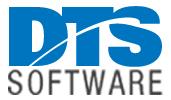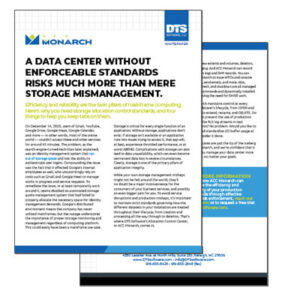Jul 9, 2021
Mainframe storage management provider DTS Software is slated to sponsor a TechChannel webinar on Wednesday, July 14, 2021, featuring guest speaker Reg Harbeck and industry expert Steve Pryor. The event will focus on storage event awareness and why the metadata from it is a must-have for better security and compliance visibility.
RALEIGH, N.C. (PRWEB) JULY 01, 2021
DTS Software, a leading global mainframe storage management software vendor, today announced sponsorship for a TechChannel (https://techchannel.com) webinar titled, “Aggregation without Aggravation: When Putting More Log Data in Your SIEM is a Good Thing” on Wednesday, July 14, 2021 at 1:00 p.m. EDT/10:00 a.m. PDT.
More data is not always better where InfoSec is concerned. We’ll explain why storage-event awareness and the data from it is a great addition to your SIEM events for better security and compliance visibility.
High-profile cyber breaches continue to make headlines in spite of the log data available to security analysts. The indicators are there, but how do you make sense of the vast amount of data to see the cyberthreat on the horizon and take a proactive stand on protecting the data?
This webinar will focus on mainframe storage management events that can be added to the mix of SIEM event data currently collected and correlated to unearth the full cyberthreat picture across your enterprise. The general indicators of cyberthreat in storage are mostly file integrity management or FIM related, but FIM is difficult on the mainframe. IBM® z/OS® ESMs (External Security Managers – RACF, CA ACF2, and CA Top Secret) are the standard for SYSLOG data on the mainframe for security and a great start, but some events are not tracked by these facilities. Experts Reg Harbeck (Founder of Mainframe Analytics, Ltd. http://www.mainframeanalytics.com) and Steve Pryor (DTS CTO) will shed some light on leveraging dfSMS events alongside other SIEM event data to give a fuller picture of threat vectors zeroing in on your most precious IT asset, your mainframe.
Key points to be addressed:
- The background of SIEMs and of mainframe storage event awareness
- Which storage management event logs can be leveraged to reduce regulatory and compliance risk for data security
- Which storage events are critical for cyber forensics, a critical component of many data governance regulations
- How to pass along valuable storage management knowledge to the new wave of mainframe storage managers who are growing up in regulated data protection environments (GDPR, CCPA, HIPAA, FISMA, PCI DSS, SOX, other)
Guest speaker Harbeck is a mainframe industry expert and IBM Champion for Z mainframes who has worked in IT and mainframes for more than three decades. During this time, he has consulted, presented, written and taught courses on mainframe-related matters worldwide, and is heavily involved in the mainframe ecosystem.
“It’s easy to forget that storage is part of pretty much everything that is subject to security and regulations in IT,” said Chief Strategist at Mainframe Analytics Ltd, Reg Harbeck. “If you don’t have dynamic and historical insights into relevant storage behaviors, you don’t have a complete security or compliance picture.”
The webinar will also feature DTS Software’s CTO, Steve Pryor, who will provide a few practical use cases for a storage-management security approach and discuss how this method can advance mainframe business enablement and avoid violating a multitude of regulations.
“Policy rules are obviously good to help keep you out of regulatory and compliance hot water, but also in a less publicized fashion, they can help save money,” said Pryor. “We’re helping to elevate policy rules above a simple email and incorporate them into the client’s technology stack.”
As large enterprises continue to negotiate the mainframe skills gap, next-generation mainframe professionals have much to learn about the storage management tools they use in addition to a myriad of other non-traditional applications and infrastructure computing concepts dating back to the 1960s. But for both new and experienced mainframers, their work is often more focused on technology than strategic business enablement. This webinar will demonstrate how to use storage policy to advance security, compliance, and automated management to improve business services delivery today and into the future. To learn more about this upcoming webinar or to register, visit https://hubs.la/H0NGgbh0.
TechChannel and DTS Software July 2021 Webinar Details:
- Title: ‘Aggregation without Aggravation: When Putting More Log Data in Your SIEM is a Good Thing’
- When: Wednesday, July 14, 2021 | 12:00 p.m. CDT / 1:00 p.m. EDT
- Speakers: Reg Harbeck, Mainframe Analytics chief strategist / Steve Pryor, DTS Software chief technology officer
- Register: https://hubs.la/H0NGgbh0
About TechChannel
TechChannel is published by MSPC, a full-service content marketing agency that works with several top brands nationwide. TechChannel produces weekly TechBeat newsletters that provide thought leadership and technical content for our Enterprise and SMB audiences. In addition, bimonthly themed e-books provide in-depth content on a single topic for the Enterprise and SMB audiences we serve.
Visitors to techchannel.com will find thought leadership content, technical articles, podcasts and more. Advertising from business partners, along with webinars, whitepaper postings, etc., also add value to the site.
About DTS Software
DTS Software, LLC is recognized worldwide as a leader in enterprise storage management technology. Specializing in products for the OS/390, MVS, Hitachi VOS3 and Fujitsu MSP operating systems, DTS Software products provide superior function and features that allow managers and users to more effectively utilize their investment in storage systems. The company was founded in 1991 and currently has over 1,000 customers in the US, Canada, Europe, and the Far East. For more information, visit https://dtssoftware.com.
Article courtesy of prweb.com


